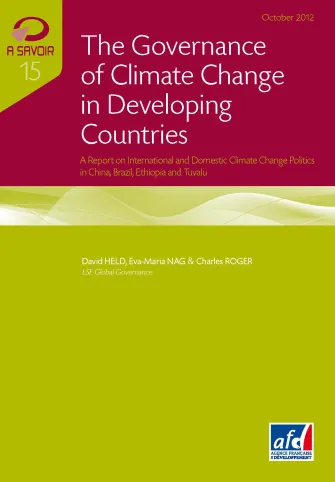Share the page
The Governance of Climate Change in Developing Countries - A Report on International and Domestic Climate Change Politics in China, Brazil, Ethiopia and Tuvalu
Published on

Climate change has become the most important global issue of our time and now occupies a key place on the global governance agenda. Recent attempts to create a concrete framework for mitigation have fallen short. This failure has been explored in a number of studies. These have mostly focused on the pursuit of a global deal through international negotiations, or on the domestic mitigation policies of Annex 1 states. However, large developing countries, such as China and Brazil, are now widely considered to be the vanguard of climate change policymaking , taking actions that are comparable to anything being done by Annex 1 states. The emergence of new climate leaders warrants a study of the trends in their domestic policies and policymaking. This report evaluates the approaches of four significant developing and emerging economies to climate change governance, describing both the evolution of institution building and policymaking processes, and analysing the political and economic drivers of change : China and Brazil, as they account for a growing percentage of global GHG emissions, and the smaller, Ethiopia and Tuvalu, as examples of those most vulnerable to its effects while bearing little or no responsibility for the problem. While the future of climate governance remains uncertain, it can be seen that climate governance is increasingly defined by the actions of developing , or non-Annex 1 states.
Useful Information
-
Authors
-
Charles ROGER, David HELD, va-Maria NAG
-
Edition
-
15
-
Number of pages
-
176
-
ISSN
-
2105-553X
-
Collection
-
To Know
-
Other languages
